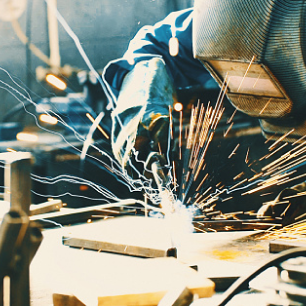Jump to:
Shipbuilding Influences Welding Developments
From pioneering the first all-welded ship to advancing welding technologies, shipyards have driven significant innovations. This exploration delves into how shipbuilding has influenced welding techniques, from the advent of inverter power supplies to the integration of hybrid laser arc welding and friction stir welding.
Several shipyards, some domestic and some foreign, claim to have built the first all-welded ship. I retired from Ingalls Shipbuilding, which claims to have built the first all-welded ship. In recent times, virtually all ships are designed to be all-welded. As such, shipbuilders require both new and advanced welding technologies. I cannot claim that shipyards were the first to use these technologies, but in my 50 years of being involved in shipbuilding, both new construction and repair yards were among the first.
Established in 1971, the National Shipbuilding Research Program funded many projects supporting shipyard welding. One of the earliest projects was the development of inverter power supplies. A company in Arizona, POWCON, was funded to utilize existing inverter technology and create welding power supplies. A major benefit of inverter machines is that they can be much smaller and lighter, making them easier to relocate. Using a man-portable power supply was a fantastic innovation, enabling more productive hours of welding for shipboard applications. The developments from this initial beginning have flourished, and the use of inverter machines has spread throughout the shipyards and is used today in many industries.
I have been told that many developments in the submerged arc welding process were made to aid in the construction of ships to support the war effort in the 1940s. The long butt joint welds in ships are ideal for this high-deposition process. Submerged arc welding is now used in many shipyard locations in combination with large fixture machines to complete the butt joint welds from one side.
With the steel industry producing higher-strength steels, many ship designs now include thinner plates. The thinner plates provide advantages in terms of the weight and speed of the ship, making it more energy efficient. However, using the thinner material has provided challenges with heat-induced distortion that must be corrected. This has led to the introduction of hybrid laser arc welding (HLAW) systems in several shipyards. While not specifically developed for the construction of ships, the HLAW process, when applied to ship structure, has resulted in the manufacture of the largest HLAW-enabled welding fixtures in the world.
The Welding Institute in England invented friction stir welding. One of the first applications for this process was welding aluminum plates for fishing boats in Europe. This process has since been used to join structures on U.S. Navy ships with an aluminum superstructure. The welds are defect-free, and the plates do not suffer from distortion issues common to welds made with more traditional processes.
Another innovative process quickly introduced in shipyards using aluminum superstructures connected to steel hulls is explosion welding to join aluminum to steel. Before using sandwich strips, the aluminum structure was joined to the steel hull using thousands of nuts and bolts. It was very labor-intensive to drill the holes with one person turning the bolt and another on the other side of the plate securing the nut. This application included not just the outside perimeter but also all the internal compartments that contained bulkheads needing to be attached to the steel structural members at their base.
Many additional technologies have supported shipbuilding. The use of ceramic backing materials to permit the welding of groove welds in steel from one side was developed to assist shipbuilders. The design of more compact, lightweight wire feeders for the gas metal arc welding and flux cored arc welding (FCAW) processes was necessary to allow welders and fitters to access an area through a small manhole. The development of low-hydrogen shielded metal arc welding and FCAW electrodes greatly reduced the incidence of hydrogen-related cold cracking in the high-yield steels used for some ship designs.
As materials and ship designs evolve, shipyards will continue to advocate for welding developments to support ship construction.
This article was written by Lee Kvidahl (AWS past president) for the American Welding Society.


